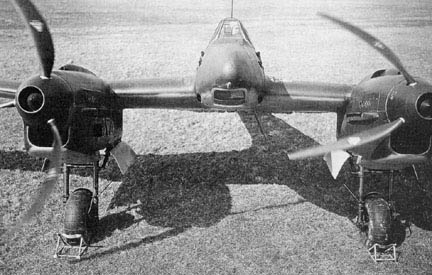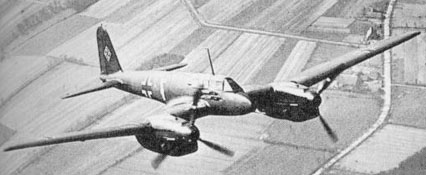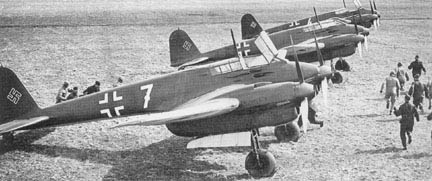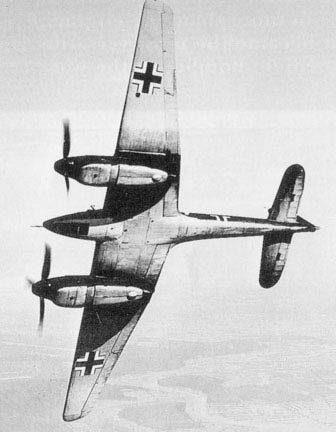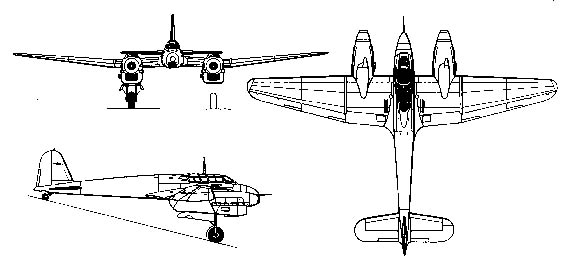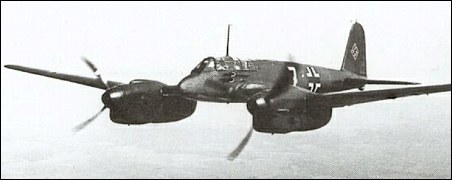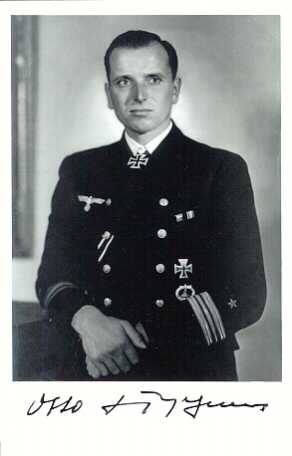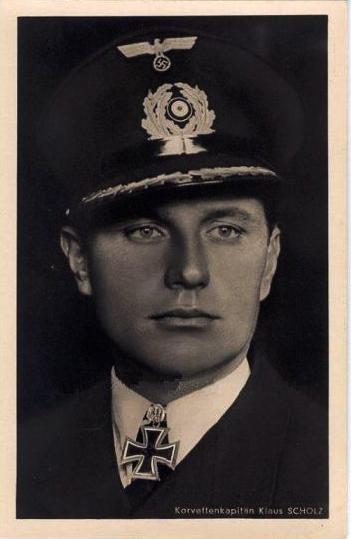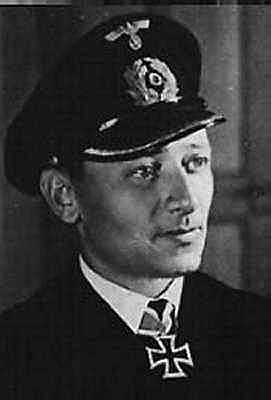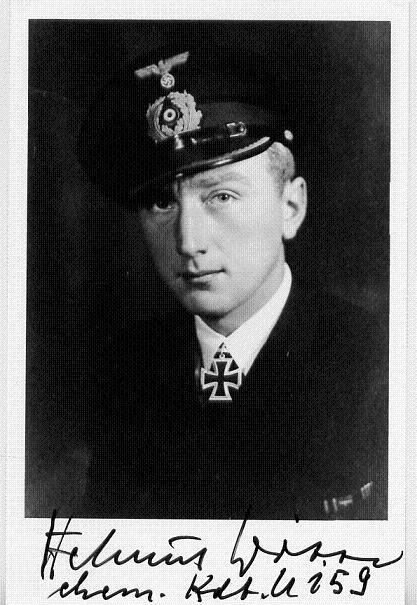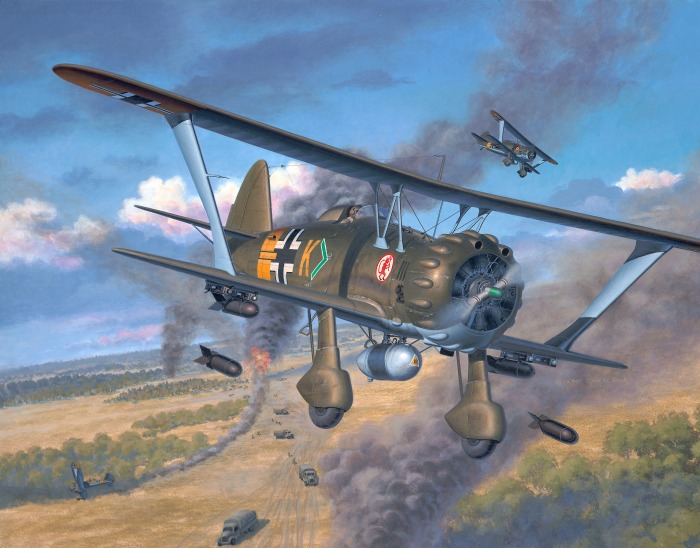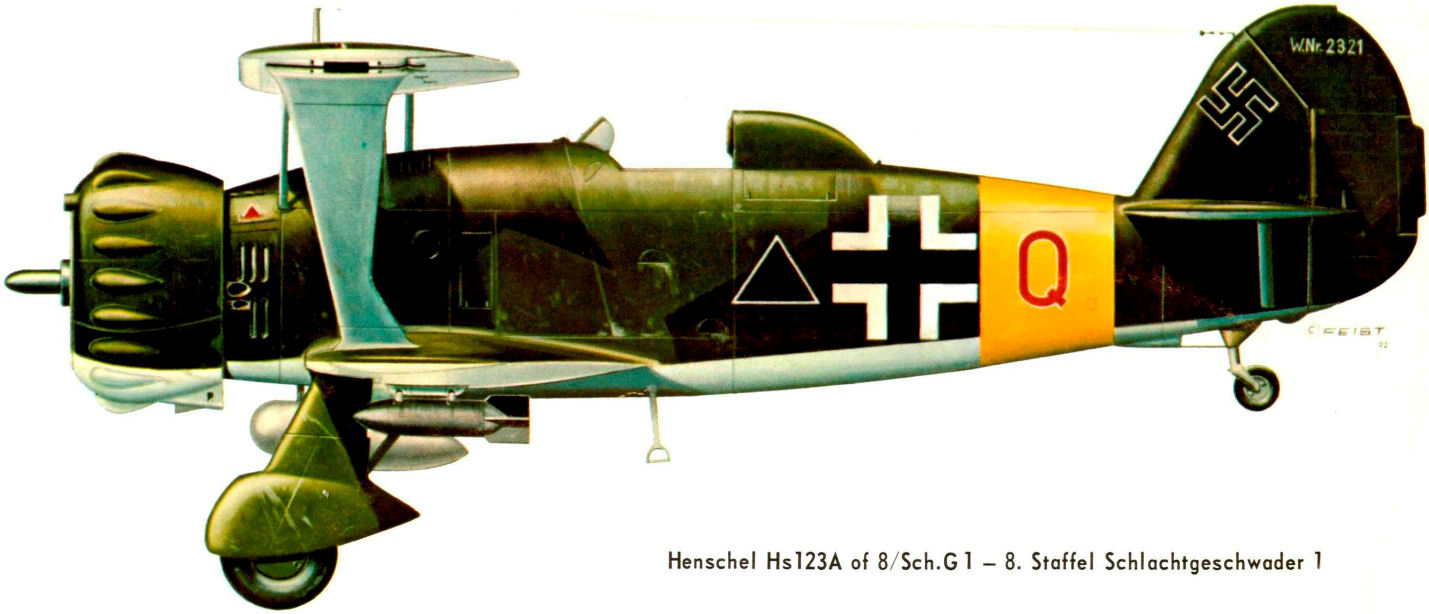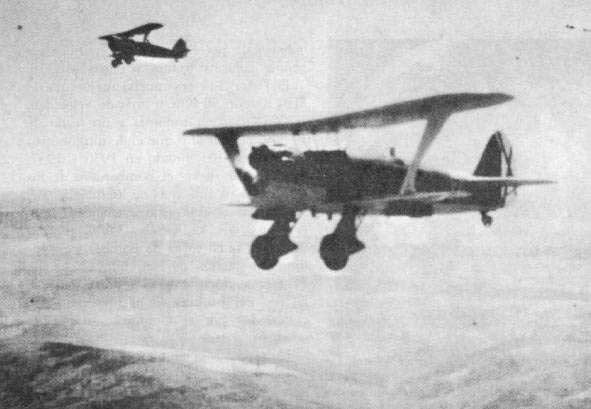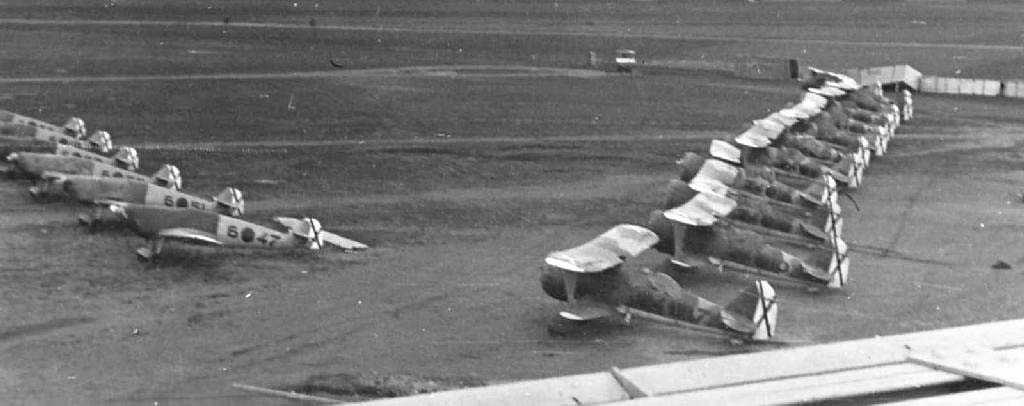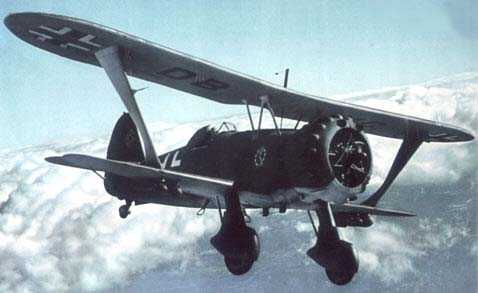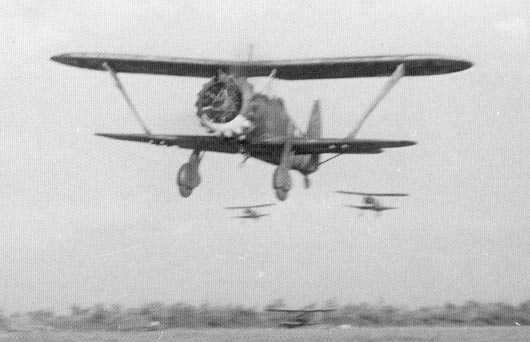In late 30s, the first variants of the Bf 110 had already been delivery and commissioned into service with the Luftwaffe. The new fighter's perfomances had however been poor and disappointing, especially regarding its engines. In 1938 the Daimler Benz put into production the DB 601 engine: this new realization gave the Zerstorer the powerful and reliable propulsion system that its creators had always wanted.
On 31 August 1939, 159 Bf 110s were in service with
I.(Z)/LG 1,
I./ZG 1 and
I./ZG 76. During the invasionof Poland, these units carried out the tasks for which the Zerstorer had been designed, escorting bombers over enemy territory, strafing enemy positions and columns on the ground and mantaining air superiority, downing several Polish PZL P.11. Losses were remarkably low, with just 12 Bf 110 lost.
A few months later, the fame and reputation of the Messerchmitt twin-engined fighter grew even more. On 18 December 1939, 24 RAF Wellington took off from their bases in Britain. Their mission was to fly to Heligoland Bight and attack any warship that could be found in the bay. The bombers were intercepted by Luftwaffe units in the area, among them I./ZG 26 and I./ZG 76 equipped with Bf 110s. At the end of the battle, 12 British bombers had been shot down, nine by Zerstorers and three by Bf 109s.
This early war experiences seemed to validate the 30s concept of the heavy fighter: many aviation planners and manufactures started to think about single-engined fighters as a thing of the past, due to their small dimensions and limited operational range. Things, however, were about to change.
In May 1940 the Wermacht launched operation Fall Gelb, the invasion of France and the Low Countries. Bf 110 units carried out the same missions they had flown during the Polish campaign, but this time results were considerably different. Against modern, fast and manouvrable single-engined fighter as the Dewoitane D. 520, and even the slower Morane-Saulnier MS.406, the Bf 110 proved to be a deadly trap for its pilots. 35% of the Zerstorer involved in the victorious blitzkgrieg were lost. But worse was to come.
 |
| Bf 110 C-4 of I./ZG52 flying over the English coast |
Following the defeat of France, Luftwaffe turned its attention on Britain. The Jagd and Zerstorergruppen were tasked with achieving air superiority over Southern England, allowing the bombers to destroy RAF airfields and facilities on the ground, thus clearing the parth for the Wermacht to invade the British Isles. The Fighter Command squadrons were equipped with
Hurricane and
Spitfire fighters: they would have proved no match for the Zerstorers, which were literally savaged and massacred against technically superior enemies. On 10 August 1940, the Adlertag (Day of the Eagle) marked the beginning of the Battle of Britain. On that day, 289 Bf 110s were in the Luftwaffe order of battle. Less than a month later, 120 of them had been lost in combat.
Due to the amount of missions that Luftflotte 2 and 3 were asked to carry out, it was impossible to pull out Bf 110 units from the frontline, as it had been done for the even more savaged Stuka Gruppen. The Zerstorer were therefore diverted to minor roles, such as low-level raids against coastal targets and radar installatios. In missions such as these, they proved to be excellent raiders and scored significant successes, but they could do so only in particular conditions, when enemy opposition wasn't vigourous and organized.
The C-1 was main variant used for the Polish campaign but, from spring 1940, the Zerstorergruppen started receiving new example of the following series:
 |
| Bf 110 C-5 of 7(H)(LG 2 at Stalino |
- C-2: fitted with an FuG 10 radio transmitter instead of the old FuG IIIaU
- C-3: with two 20 MG FF/M instead of MG FF
- C-4: with better protection for the gunner
- C-4/B: Jabo version, fitted with ETC 250 bomb racks and two DB 601Ba engines, later DB 601N.
- C-5: reconnaisance versions with guns reduced to four MG 17 and a Rb 50/30 camera installed.
All these changes led to a substantial increase in weight: the Zerstorer was now 222 kg heavier than the original C-1.
In addition to that, the Norwegian campaign in 1940 had highlighted the need for a long range fighter, able to escort German shipping in the North Atlantic and in the vast Arctic region of Norway, Finland and the Barents sea. The versions were designed to fullfill these duties. They were:

- D-0: pre-production series
- D-1: C-3 airframes with a 1,200 L belly-mounted tank, called Dachelbauch (Dachsund). CLICK ON THE PICTURE

- D-1/R-2: two 900 L drop tanks under each wing instead of the Dachelbauch
- D-2: two 300 L drop tanks under each wing and an ETC 500 bomb rack under the fuselage
- D-3: designed with a lenghtened tail fitted with a rescue dinghy. Able to carry both 300 L or 900 L drop tanks. CLICK RIGHT
These versions were never popular with their crews. They were extremely heavy, with low speed and bad manouvrablity. The Dachelbauch had in addition a dangerous feature: even when fuel was low, or totally ran out, the belly tank remained full of gas vapors. Many aircraft were lost when fire develloped inside these ill conceived tanks.
 |
| Did you asked yourself: why the nickname Dachelbauch (dachsund)? |

